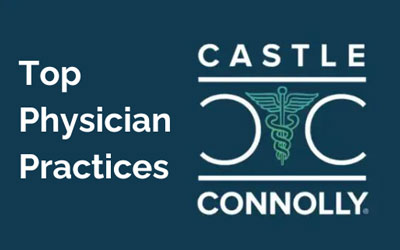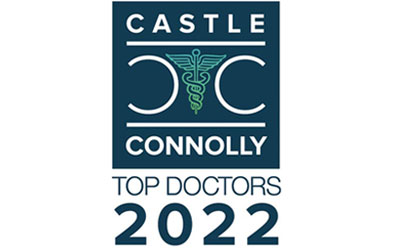Colon and Rectal Cancer
General Information About Colon Cancer
Key Points for This Section
- Colon cancer is a disease in which malignant (cancer) cells form in the tissues of the colon.
- Age and health history can affect the risk of developing colon cancer.
- Possible signs of colon cancer include a change in bowel habits or blood in the stool.
- Tests that examine the colon and rectum are used to detect (find) and diagnose colon cancer.
- Certain factors affect prognosis (chance of recovery) and treatment options.
Colon cancer is a disease in which malignant (cancer) cells form in the tissues of the colon.
The colon is part of the body’s digestive system. The digestive system removes and processes nutrients (vitamins, minerals, carbohydrates, fats, proteins, and water) from foods and helps pass waste material out of the body. The digestive system is made up of the esophagus, stomach, and the small and large intestines. The first 6 feet of the large intestine are called the large bowel or colon. The last 6 inches are the rectum and the anal canal. The anal canal ends at the anus (the opening of the large intestine to the outside of the body).
See the PDQ summary on Unusual Cancers of Childhood for information about colorectal cancer in children.
Age and health history can affect the risk of developing colon cancer.
Anything that increases your chance of getting a disease is called a risk factor. Having a risk factor does not mean that you will get cancer; not having risk factors doesn’t mean that you will not get cancer. People who think they may be at risk should discuss this with their doctor. Risk factors include the following:
- Age 50 or older.
- A family history of cancer of the colon or rectum.
- A personal history of cancer of the colon, rectum, ovary, endometrium, or breast.
- A history of polyps (small pieces of bulging tissue) in the colon.
- A history of ulcerative colitis (ulcers in the lining of the large intestine) or Crohn disease.
- Certain hereditary conditions, such as familial adenomatous polyposis and hereditary nonpolyposis colon cancer (HNPCC; Lynch Syndrome).
Possible signs of colon cancer include a change in bowel habits or blood in the stool.
These and other symptoms may be caused by colon cancer. Other conditions may cause the same symptoms. A doctor should be consulted if any of the following problems occur:
- A change in bowel habits.
- Blood (either bright red or very dark) in the stool.
- Diarrhea, constipation, or feeling that the bowel does not empty completely.
- Stools that are narrower than usual.
- Frequent gas pains, bloating, fullness, or cramps.
- Weight loss for no known reason.
- Feeling very tired.
- Vomiting.
Tests that examine the colon and rectum are used to detect (find) and diagnose colon cancer.
The following tests and procedures may be used:
- Physical exam and history: An exam of the body to check general signs of health, including checking for signs of disease, such as lumps or anything else that seems unusual. A history of the patient’s health habits and past illnesses and treatments will also be taken.
- Digital rectal exam: An exam of the rectum. The doctor or nurse inserts a lubricated, gloved finger into the rectum to feel for lumps or anything else that seems unusual.
- Fecal occult blood test: A test to check stool (solid waste) for blood that can only be seen with a microscope. Small samples of stool are placed on special cards and returned to the doctor or laboratory for testing.
- Barium enema: A series of x-rays of the lower gastrointestinal tract. A liquid that contains barium (a silver-white metallic compound) is put into the rectum. The barium coats the lower gastrointestinal tract and x-rays are taken. This procedure is also called a lower GI series.
- Sigmoidoscopy: A procedure to look inside the rectum and sigmoid (lower) colon for polyps (small pieces of bulging tissue), abnormal areas, or cancer. A sigmoidoscope is inserted through the rectum into the sigmoid colon. A sigmoidoscope is a thin, tube-like instrument with a light and a lens for viewing. It may also have a tool to remove polyps or tissue samples, which are checked under a microscope for signs of cancer.
- Colonoscopy: A procedure to look inside the rectum and colon for polyps, abnormal areas, or cancer. A colonoscope is inserted through the rectum into the colon. A colonoscope is a thin, tube-like instrument with a light and a lens for viewing. It may also have a tool to remove polyps or tissue samples, which are checked under a microscope for signs of cancer.
- Biopsy: The removal of cells or tissues so they can be viewed under a microscope by a pathologist to check for signs of cancer.
- Virtual colonoscopy: A procedure that uses a series of x-rays called computed tomography to make a series of pictures of the colon. A computer puts the pictures together to create detailed images that may show polyps and anything else that seems unusual on the inside surface of the colon. This test is also called colonography or CT colonography.
Certain factors affect prognosis (chance of recovery) and treatment options.
The prognosis (chance of recovery) depends on the following:
- The stage of the cancer (whether the cancer is in the inner lining of the colon only, involves the whole colon, or has spread to other places in the body).
- Whether the cancer has blocked or created a hole in the colon.
- Whether there are any cancer cells left after surgery.
- The blood levels of carcinoembryonic antigen (CEA; a substance in the blood that may be increased when cancer is present) before treatment begins.
- Whether the cancer has recurred.
- The patient’s general health.
Treatment options depend on the following:
- The stage of the cancer.
- Whether the cancer has recurred.
- The patient’s general health.
Stages of Colon Cancer
Key Points for This Section
- After colon cancer has been diagnosed, tests are done to find out if cancer cells have spread within the colon or to other parts of the body.
- There are three ways that cancer spreads in the body.
- The following stages are used for colon cancer:
- Stage 0 (Carcinoma in Situ)
- Stage I
- Stage II
- Stage III
- Stage IV
After colon cancer has been diagnosed, tests are done to find out if cancer cells have spread within the colon or to other parts of the body.
The process used to find out if cancer has spread within the colon or to other parts of the body is called staging. The information gathered from the staging process determines the stage of the disease. It is important to know the stage in order to plan treatment. The following tests and procedures may be used in the staging process:
- CT scan (CAT scan): A procedure that makes a series of detailed pictures of areas inside the body, such as the abdomen, pelvis, or chest, taken from different angles. The pictures are made by a computer linked to an x-ray machine. A dye may be injected into a vein or swallowed to help the organs or tissues show up more clearly. This procedure is also called computed tomography, computerized tomography, or computerized axial tomography.
- Lymph node biopsy: The removal of all or part of a lymph node. A pathologist views the tissue under a microscope to look for cancer cells.
- Complete blood count (CBC): A procedure in which a sample of blood is drawn and checked for the following:
- The number of red blood cells, white blood cells, and platelets.
- The amount of hemoglobin (the protein that carries oxygen) in the red blood cells.
- The portion of the blood sample made up of red blood cells.
- Carcinoembryonic antigen (CEA) assay: A test that measures the level of CEA in the blood. CEA is released into the bloodstream from both cancer cells and normal cells. When found in higher than normal amounts, it can be a sign of colon cancer or other conditions.
- MRI (magnetic resonance imaging): A procedure that uses a magnet, radio waves, and a computer to make a series of detailed pictures of areas inside the colon. A substance called gadolinium is injected into the patient through a vein. The gadolinium collects around the cancer cells so they show up brighter in the picture. This procedure is also called nuclear magnetic resonance imaging (NMRI).
- Chest x-ray: An x-ray of the organs and bones inside the chest. An x-ray is a type of energy beam that can go through the body and onto film, making a picture of areas inside the body.
- Surgery: A procedure to remove the tumor and see how far it has spread through the colon.
- PET scan (positron emission tomography scan): A procedure to find malignant tumor cells in the body. A small amount of radioactive glucose (sugar) is injected into a vein. The PET scanner rotates around the body and makes a picture of where glucose is being used in the body. Malignant tumor cells show up brighter in the picture because they are more active and take up more glucose than normal cells do.
There are three ways that cancer spreads in the body.
The three ways that cancer spreads in the body are:
- Through tissue. Cancer invades the surrounding normal tissue.
- Through the lymph system. Cancer invades the lymph system and travels through the lymph vessels to other places in the body.
- Through the blood. Cancer invades the veins and capillaries and travels through the blood to other places in the body.
When cancer cells break away from the primary (original) tumor and travel through the lymph or blood to other places in the body, another (secondary) tumor may form. This process is called metastasis. The secondary (metastatic) tumor is the same type of cancer as the primary tumor. For example, if breast cancer spreads to the bones, the cancer cells in the bones are actually breast cancer cells. The disease is metastatic breast cancer, not bone cancer.
The following stages are used for colon cancer:
Stage 0 (Carcinoma in Situ)
In stage 0, abnormal cells are found in the mucosa (innermost layer) of the colon wall. These abnormal cells may become cancer and spread. Stage 0 is also called carcinoma in situ.
Stage I
In stage I, cancer has formed in the mucosa (innermost layer) of the colon wall and has spread to the submucosa (layer of tissue under the mucosa). Cancer may have spread to the muscle layer of the colon wall.
Stage II
Stage II colon cancer is divided into stage IIA, stage IIB, and stage IIC.
- Stage IIA: Cancer has spread through the muscle layer of the colon wall to the serosa (outermost layer) of the colon wall.
- Stage IIB: Cancer has spread through the serosa (outermost layer) of the colon wall but has not spread to nearby organs.
- Stage IIC: Cancer has spread through the serosa (outermost layer) of the colon wall to nearby organs.
Stage III
Stage III colon cancer is divided into stage IIIA, stage IIIB, and stage IIIC.
In stage IIIA:
- Cancer may have spread through the mucosa (innermost layer) of the colon wall to the submucosa (layer of tissue under the mucosa) and may have spread to the muscle layer of the colon wall. Cancer has spread to at least one but not more than 3 nearby lymph nodes or cancer cells have formed in tissues near the lymph nodes; or
- Cancer has spread through the mucosa (innermost layer) of the colon wall to the submucosa (layer of tissue under the mucosa). Cancer has spread to at least 4 but not more than 6 nearby lymph nodes.
In stage IIIB:
- Cancer has spread through the muscle layer of the colon wall to the serosa (outermost layer) of the colon wall or has spread through the serosa but not to nearby organs. Cancer has spread to at least one but not more than 3 nearby lymph nodes or cancer cells have formed in tissues near the lymph nodes; or
- Cancer has spread to the muscle layer of the colon wall or to the serosa (outermost layer) of the colon wall. Cancer has spread to at least 4 but not more than 6 nearby lymph nodes; or
- Cancer has spread through the mucosa (innermost layer) of the colon wall to the submucosa (layer of tissue under the mucosa) and may have spread to the muscle layer of the colon wall. Cancer has spread to 7 or more nearby lymph nodes.
In stage IIIC:
- Cancer has spread through the serosa (outermost layer) of the colon wall but has not spread to nearby organs. Cancer has spread to at least 4 but not more than 6 nearby lymph nodes; or
- Cancer has spread through the muscle layer of the colon wall to the serosa (outermost layer) of the colon wall or has spread through the serosa but has not spread to nearby organs. Cancer has spread to 7 or more nearby lymph nodes; or
- Cancer has spread through the serosa (outermost layer) of the colon wall and has spread to nearby organs. Cancer has spread to one or more nearby lymph nodes or cancer cells have formed in tissues near the lymph nodes.
Stage IV
Stage IV colon cancer is divided into stage IVA and stage IVB.
- Stage IVA: Cancer may have spread through the colon wall and may have spread to nearby organs or lymph nodes. Cancer has spread to one organ that is not near the colon, such as the liver, lung, or ovary, or to a distant lymph node.
- Stage IVB: Cancer may have spread through the colon wall and may have spread to nearby organs or lymph nodes. Cancer has spread to more than one organ that is not near the colon or into the lining of the abdominal wall.
Recurrent Colon Cancer
Recurrent colon cancer is cancer that has recurred (come back) after it has been treated. The cancer may come back in the colon or in other parts of the body, such as the liver, lungs, or both.
Treatment Option Overview
Key Points for This Section
- There are different types of treatment for patients with colon cancer.
- Four types of standard treatment are used:
- Surgery
- Chemotherapy
- Radiation therapy
- Targeted therapy
- New types of treatment are being tested in clinical trials.
- Patients may want to think about taking part in a clinical trial.
- Patients can enter clinical trials before, during, or after starting their cancer treatment.
- Follow-up tests may be needed.
There are different types of treatment for patients with colon cancer.
Different types of treatment are available for patients with colon cancer. Some treatments are standard (the currently used treatment), and some are being tested in clinical trials. A treatment clinical trial is a research study meant to help improve current treatments or obtain information on new treatments for patients with cancer. When clinical trials show that a new treatment is better than the standard treatment, the new treatment may become the standard treatment. Patients may want to think about taking part in a clinical trial. Some clinical trials are open only to patients who have not started treatment.
Four types of standard treatment are used:
Surgery
Surgery (removing the cancer in an operation) is the most common treatment for all stages of colon cancer. A doctor may remove the cancer using one of the following types of surgery:
- Local excision: If the cancer is found at a very early stage, the doctor may remove it without cutting through the abdominal wall. Instead, the doctor may put a tube through the rectum into the colon and cut the cancer out. This is called a local excision. If the cancer is found in a polyp (a small bulging piece of tissue), the operation is called a polypectomy.
- Resection: If the cancer is larger, the doctor will perform a partial colectomy (removing the cancer and a small amount of healthy tissue around it). The doctor may then perform an anastomosis (sewing the healthy parts of the colon together). The doctor will also usually remove lymph nodes near the colon and examine them under a microscope to see whether they contain cancer.
- Resection and colostomy: If the doctor is not able to sew the 2 ends of the colon back together, a stoma (an opening) is made on the outside of the body for waste to pass through. This procedure is called a colostomy. A bag is placed around the stoma to collect the waste. Sometimes the colostomy is needed only until the lower colon has healed, and then it can be reversed. If the doctor needs to remove the entire lower colon, however, the colostomy may be permanent.
- Radiofrequency ablation: The use of a special probe with tiny electrodes that kill cancer cells. Sometimes the probe is inserted directly through the skin and only local anesthesia is needed. In other cases, the probe is inserted through an incision in the abdomen. This is done in the hospital with general anesthesia.
- Cryosurgery: A treatment that uses an instrument to freeze and destroy abnormal tissue, such as carcinoma in situ. This type of treatment is also called cryotherapy.
Even if the doctor removes all the cancer that can be seen at the time of the operation, some patients may be given chemotherapy or radiation therapy after surgery to kill any cancer cells that are left. Treatment given after the surgery, to lower the risk that the cancer will come back, is called adjuvant therapy.
Chemotherapy
Chemotherapy is a cancer treatment that uses drugs to stop the growth of cancer cells, either by killing the cells or by stopping them from dividing. When chemotherapy is taken by mouth or injected into a vein or muscle, the drugs enter the bloodstream and can reach cancer cells throughout the body (systemic chemotherapy). When chemotherapy is placed directly into the cerebrospinal fluid, an organ, or a body cavity such as the abdomen, the drugs mainly affect cancer cells in those areas (regional chemotherapy).
Chemoembolization of the hepatic artery may be used to treat cancer that has spread to the liver. This involves blocking the hepatic artery (the main artery that supplies blood to the liver) and injecting anticancer drugs between the blockage and the liver. The liver’s arteries then deliver the drugs throughout the liver. Only a small amount of the drug reaches other parts of the body. The blockage may be temporary or permanent, depending on what is used to block the artery. The liver continues to receive some blood from the hepatic portal vein, which carries blood from the stomach and intestine.
The way the chemotherapy is given depends on the type and stage of the cancer being treated.
See Drugs Approved for Colon and Rectal Cancer for more information.
Radiation therapy
Radiation therapy is a cancer treatment that uses high-energy x-rays or other types of radiation to kill cancer cells or keep them from growing. There are two types of radiation therapy. External radiation therapy uses a machine outside the body to send radiation toward the cancer. Internal radiation therapy uses a radioactive substance sealed in needles, seeds, wires, or catheters that are placed directly into or near the cancer. The way the radiation therapy is given depends on the type and stage of the cancer being treated.
Targeted therapy
Targeted therapy is a type of treatment that uses drugs or other substances to identify and attack specific cancer cells without harming normal cells. Monoclonal antibody therapy is a type of targeted therapy used in the treatment of colon cancer.
Monoclonal antibody therapy uses antibodies made in the laboratory from a single type of immune system cell. These antibodies can identify substances on cancer cells or normal substances that may help cancer cells grow. The antibodies attach to the substances and kill the cancer cells, block their growth, or keep them from spreading. Monoclonal antibodies are given by infusion. They may be used alone or to carry drugs, toxins, or radioactive material directly to cancer cells.
See Drugs Approved for Colon and Rectal Cancer for more information.
New types of treatment are being tested in clinical trials.
Information about clinical trials is available from the NCI Web site.
Patients may want to think about taking part in a clinical trial.
For some patients, taking part in a clinical trial may be the best treatment choice. Clinical trials are part of the cancer research process. Clinical trials are done to find out if new cancer treatments are safe and effective or better than the standard treatment.
Many of today's standard treatments for cancer are based on earlier clinical trials. Patients who take part in a clinical trial may receive the standard treatment or be among the first to receive a new treatment.
Patients who take part in clinical trials also help improve the way cancer will be treated in the future. Even when clinical trials do not lead to effective new treatments, they often answer important questions and help move research forward.
Patients can enter clinical trials before, during, or after starting their cancer treatment.
Some clinical trials only include patients who have not yet received treatment. Other trials test treatments for patients whose cancer has not gotten better. There are also clinical trials that test new ways to stop cancer from recurring (coming back) or reduce the side effects of cancer treatment.
Clinical trials are taking place in many parts of the country. See the Treatment Options section that follows for links to current treatment clinical trials. These have been retrieved from NCI's listing of clinical trials.
Follow-up tests may be needed.
Some of the tests that were done to diagnose the cancer or to find out the stage of the cancer may be repeated. Some tests will be repeated in order to see how well the treatment is working. Decisions about whether to continue, change, or stop treatment may be based on the results of these tests. This is sometimes called re-staging.
Some of the tests will continue to be done from time to time after treatment has ended. The results of these tests can show if your condition has changed or if the cancer has recurred (come back). These tests are sometimes called follow-up tests or check-ups.
For colon cancer, a blood test to measure carcinoembryonic antigen (CEA; a substance in the blood that may be increased when colon cancer is present) may be done along with other tests to see if the cancer has come back.
Treatment Options for Colon Cancer
A link to a list of current clinical trials is included for each treatment section. For some types or stages of cancer, there may not be any trials listed. Check with your doctor for clinical trials that are not listed here but may be right for you.
Stage 0 (Carcinoma in Situ)
Treatment of stage 0 (carcinoma in situ) may include the following types of surgery:
- Local excision or simple polypectomy.
- Resection and anastomosis. This is done when the tumor is too large to remove by local excision.
Check for U.S. clinical trials from NCI's list of cancer clinical trials that are now accepting patients with stage 0 colon cancer. For more specific results, refine the search by using other search features, such as the location of the trial, the type of treatment, or the name of the drug. General information about clinical trials is available from the NCI Web site.
Stage I Colon Cancer
Treatment of stage I colon cancer is usually resection and anastomosis.
Check for U.S. clinical trials from NCI's list of cancer clinical trials that are now accepting patients with stage I colon cancer. For more specific results, refine the search by using other search features, such as the location of the trial, the type of treatment, or the name of the drug. General information about clinical trials is available from the NCI Web site.
Stage II Colon Cancer
Treatment of stage II colon cancer may include the following:
- Resection and anastomosis.
- Clinical trials of chemotherapy or biologic therapy after surgery.
Check for U.S. clinical trials from NCI's list of cancer clinical trials that are now accepting patients with stage II colon cancer. For more specific results, refine the search by using other search features, such as the location of the trial, the type of treatment, or the name of the drug. General information about clinical trials is available from the NCI Web site.
Stage III Colon Cancer
Treatment of stage III colon cancer may include the following:
- Resection and anastomosis followed by chemotherapy.
- Clinical trials of chemotherapy after surgery.
Check for U.S. clinical trials from NCI's list of cancer clinical trials that are now accepting patients with stage III colon cancer. For more specific results, refine the search by using other search features, such as the location of the trial, the type of treatment, or the name of the drug. General information about clinical trials is available from the NCI Web site.
Stage IV and Recurrent Colon Cancer
Treatment of stage IV and recurrent colon cancer may include the following:
- Resection with or without anastomosis.
- Surgery to remove parts of other organs, such as the liver, lungs, and ovaries, where the cancer may have recurred or spread.
- Radiation therapy or chemotherapy may be offered to some patients as palliative therapy to relieve symptoms and improve quality of life.
- Chemotherapy and targeted therapy with a monoclonal antibody.
- Clinical trials of chemotherapy and/or targeted therapy with a monoclonal antibody.
Treatment of locally recurrent colon cancer may be local excision.
Special treatments of cancer that has spread to or recurred in the liver may include the following:
- Chemotherapy followed by resection.
- Radiofrequency ablation or cryosurgery.
- Clinical trials of hepatic chemoembolization with radiation therapy.
Check for U.S. clinical trials from NCI's list of cancer clinical trials that are now accepting patients with stage IV colon cancer and recurrent colon cancer. For more specific results, refine the search by using other search features, such as the location of the trial, the type of treatment, or the name of the drug. General information about clinical trials is available from the NCI Web site.
To Learn More About Colon Cancer
For more information from the National Cancer Institute about colon cancer, see the following:
- Colon and Rectal Cancer Home Page
- What You Need to Know About™ Cancer of the Colon and Rectum
- Colorectal Cancer Prevention
- Colorectal Cancer Screening
- Colorectal Cancer Screening (NCI Fact Sheet)
- Unusual Cancers of Childhood
- Cryosurgery in Cancer Treatment: Questions and Answers
- Drugs Approved for Colon and Rectal Cancer
- Targeted Cancer Therapies
- Understanding Cancer Series: Targeted Therapies (Advances in Targeted Therapies)
- Understanding Cancer Series: Gene Testing
For general cancer information and other resources from the National Cancer Institute, see the following:
- What You Need to Know About™ Cancer
- Understanding Cancer Series: Cancer
- Cancer Staging
- Chemotherapy and You: Support for People With Cancer
- Radiation Therapy and You: Support for People With Cancer
- Coping with Cancer: Supportive and Palliative Care
- Cancer Library
- Information For Survivors/Caregivers/Advocates
For more information about Colon and Rectal Cancer, please visit the National Cancer Institute.























